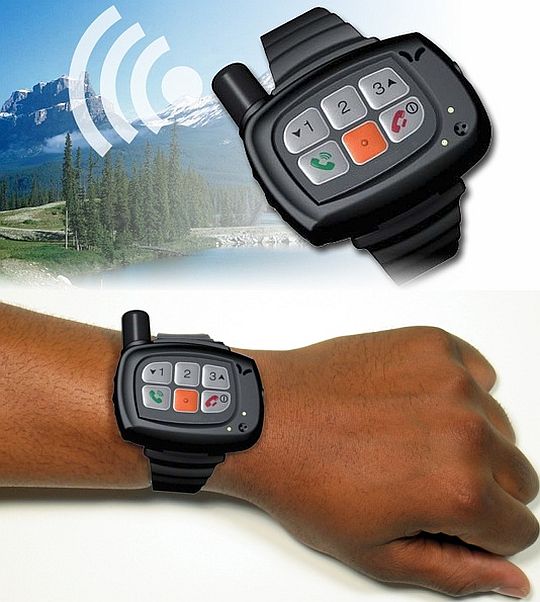These wristwatch-sized computers often come packed with a library of position-based information; it’s possible to buy a GPS watch today that will let you find your location — anywhere on the planet — within minutes of opening the box. But GPS watches go far beyond simple “hey, look where I am” gimmicks. With a little knowledge about how the watches work, you can train smarter and perform better in the heat of competition. There’s no need to wait for the future of sports and fitness — it’s here today, and it fits on your wrist.
The History of GPS Technology
GPS can trace its origins to the very birth of spaceflight; the principles behind it came together as American scientists scrambled to track Sputnik, the satellite launched into orbit by the Soviet Union in October of 1957. Researchers from Johns Hopkins University’s Applied Physics Laboratory, Drs. William Guier and George Weiffenbach, discovered that they could track early satellites’ positions based on the Doppler Effect: Signals transmitted from a moving satellite would appear to distort as it approached or moved away from the receiving station. By measuring the nature and severity of the distortion, a person could calculate the orientation of the satellite’s orbit.
APL company researcher Frank McClure suggested that the tracking system could also work the other way around: By tracking a satellite with a precisely known orbit and evaluating the resulting Doppler shifts in its signal, a person on the ground could identify his position anywhere he could pick up the signal. The U.S. Navy expanded the system into the Navy Navigation Satellite System, which was actively guiding ships by 1964. (For more on the history of GPS, take a look at our article on How GPS Receivers Work.)
Military-sponsored research continued into the 1970s and ’80s as scientists tried to improve the signal precision, reliability and speed of satellite navigation. Technology switched from tracking Doppler shifts to using triangulation and signal timing: The longer a signal took to reach a receiver, the farther away the satellite was at the moment the signal was sent. GPS was a tried-and-true tool for all branches of the U.S. military and its allies by the 1980s, when the U.S. government began allowing widespread civilian access to the technology [source: Parkinson].
Early civilian GPS units were large and heavy, limiting their usefulness for on-the-go users. But they suffered from a much more crippling drawback: They weren’t all that accurate. To prevent enemies from accessing the navigation signals, the U.S. military employed dithering: intentional interference with the satellites’ timing signals that unauthorized users couldn’t decode. This limited civilian GPS accuracy to about 300 feet (100 meters). It wasn’t until the year 2000 that the U.S. government finally removed the dithering, making accurate civilian navigation possible. GPS then became a useful tool for anyone who needed to know where they were, how fast they were traveling or how to get where they wanted to go [sources: Parkinson; Navigon].
So that took care of the accuracy issue, but how did GPS unit manufacturers create products of a reasonably portable size?
The Incredible Shrinking GPS Unit
The access to dither-free GPS technology coincided with a revolution in electronics miniaturization — think about how much less a modern laptop computer weighs than the one you were using in 1996. GPS developers embraced innovations such as surface mount technology (SMT), in which tiny components are soldered directly to a circuit board (rather than using wire leads to make connections), and robotic assembly that helped shrink the timing and signal processing chips at the heart of GPS receivers into miniscule components. Today they’re almost too small to see clearly without magnification [source: Poole].
Researchers further shrank GPS units by applying fractal geometry — which involves shapes made up of repeating, expandable patterns — to design powerful receiver antennae that literally folded into miniscule spaces. This important (and once bulky) piece of the GPS receiver package became small enough to hide in the slim case of a smartphone — or within the body of a watch [source: Rusu and Baican; Mikkola].
The first GPS watches were essentially small versions of handheld GPS units, measuring about 2 to 3 inches (about 50 to 75 millimeters) long and about 1 inch (25 millimeters) wide, with wrist straps attached. Even though they were indeed smaller and lighter than most other GPS units from the early 21st century, they were still large enough to make running long distances with one — not to mention running to the coffee shop after a workout with the thing on your arm — more trouble than it was worth for many athletes [source: Wollman].
Sports that hinge on knowing one’s location relative to a target, such as golf, adopted GPS early in this miniaturization process. For example, well-known golf champion and course designer Greg Norman became an adviser with golf-related GPS products producer Inforetech in 2002 [source: GPS Industries]. But by and large, it took two technological steps for consumers to start adopting GPS watches on a wide scale.
For more Detail: How GPS Watches Work

